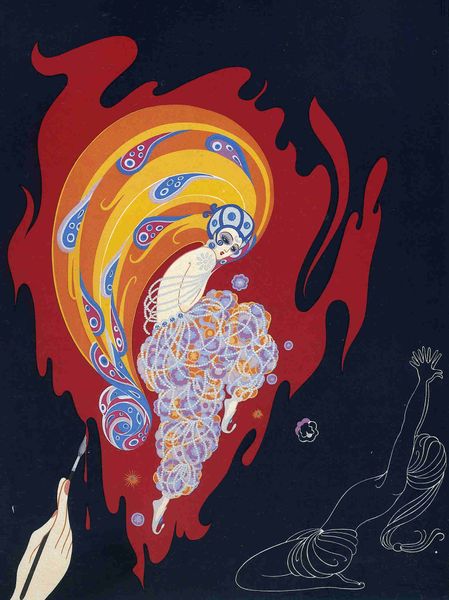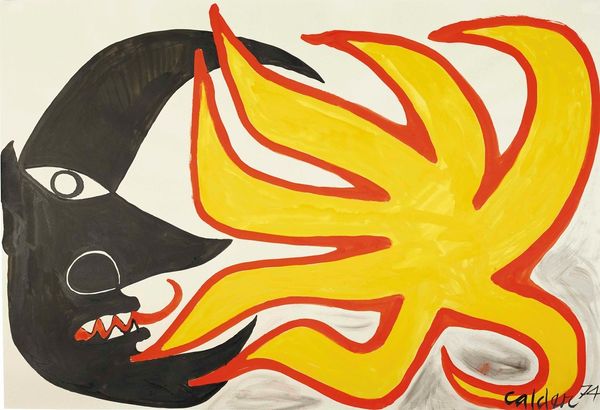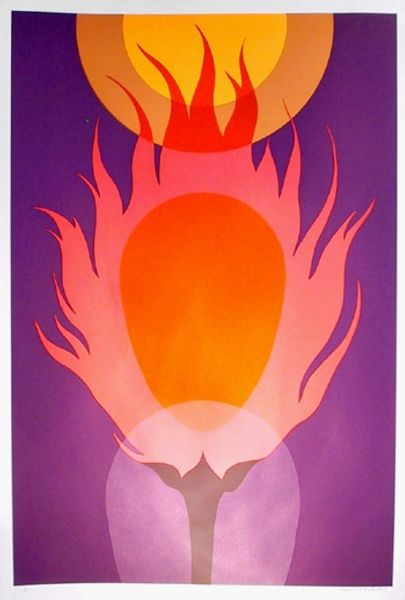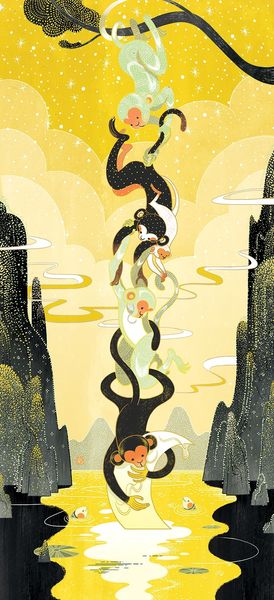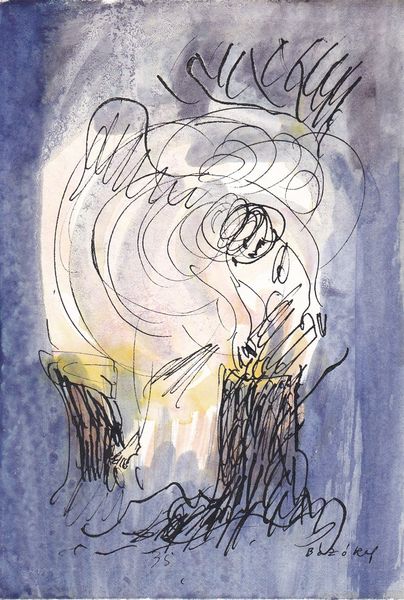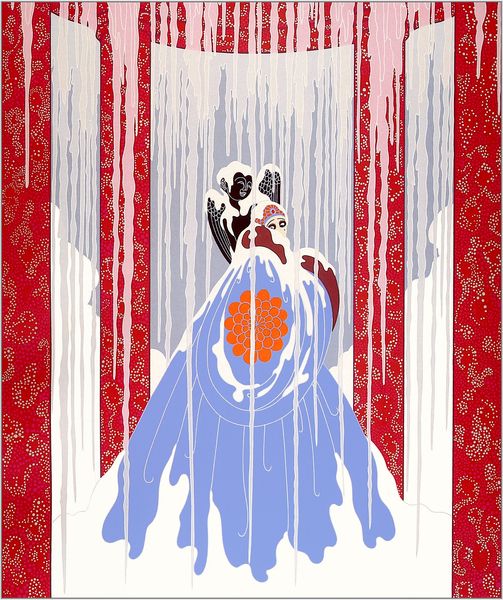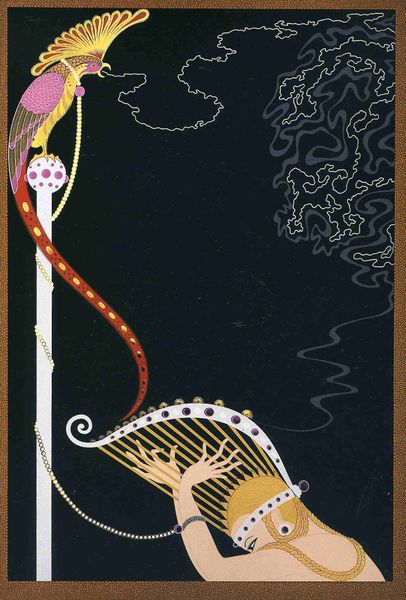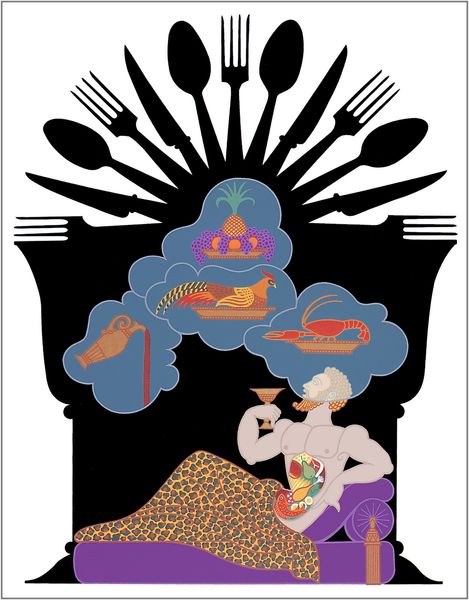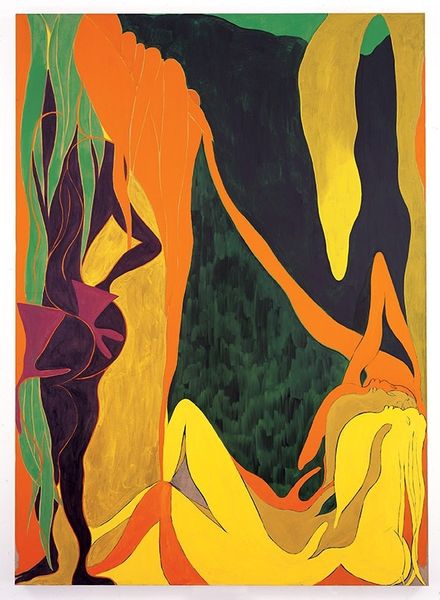
drawing
#
drawing
#
fairy-painting
#
art-nouveau
#
caricature
#
figuration
#
naive art
#
vector illustration
#
men
#
symbolism
#
decorative-art
Copyright: Erte,Fair Use
Art Historian: Editor: So, this drawing is called "The French Rooster" by Erte. I don't have the date unfortunately. There's this... sort of ethereal figure at the top, overlooking a rooster near some flames. It gives off this bizarre but slightly unsettling vibe. What do you see in this piece? Art Historian: I see a symbolic tapestry woven with threads of cultural identity, gender performativity, and historical context. How do you perceive the central figure, draped in celestial patterns, in relation to the rooster below? Does that pose strike you as particularly gendered, perhaps? Editor: I see how the figure on the rock seems idealized. Maybe a feminine symbol in contrast to the rooster, but there's something powerful about its position, elevated above the rooster and the fire below, almost like they’re commanding everything. Is there something about French history that informs the relationship here? Art Historian: Absolutely. The rooster is a long-standing symbol of France. Consider the timing – even without a date, Erte’s Art Nouveau style points us to a specific historical moment. This piece seems to almost playfully critique of French identity by embodying these traditional symbols into queer and possibly non-binary performance of identity and power, subverting expectation of gendered roles through costume and caricature. It poses vital questions, such as “who dictates our national narratives?” or even "how has colonization influenced the west’s understanding of art forms such as caricature?” What do you make of those flames down there, though? Editor: I initially saw them as purely decorative. But perhaps it represents unrest or maybe revolutionary fervor? This definitely changes how I see the overall image; what I thought was merely decorative turns out to carry so many additional historical, cultural, and maybe even philosophical undertones. Art Historian: Precisely! Recognizing the historical weight transforms this from a visually pleasing decorative drawing into an inquiry regarding identity. I encourage you to think about these aspects of art, to deepen the understanding, particularly through contemporary theory, of an artwork. Thank you.
Comments
No comments
Be the first to comment and join the conversation on the ultimate creative platform.
